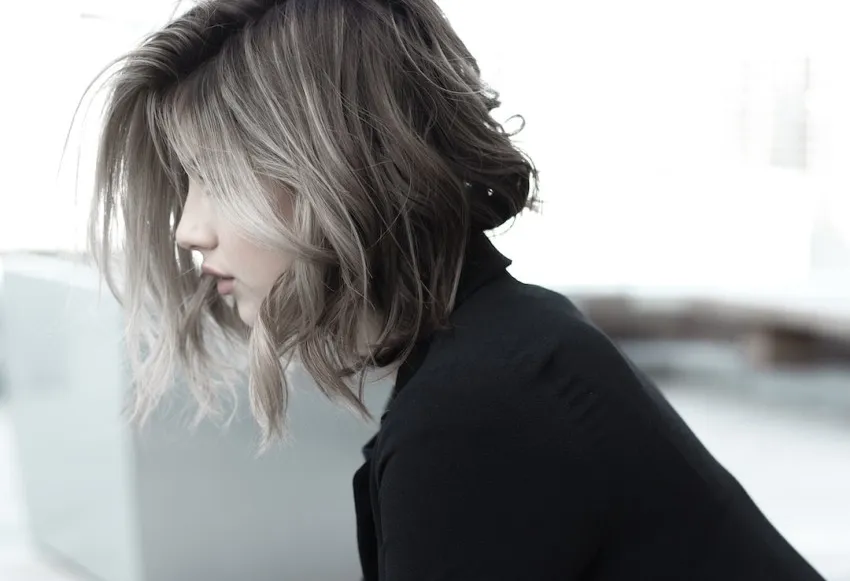Having beautiful and healthy hair is something that many people strive for. However, achieving and maintaining luscious locks can sometimes feel like a tedious task. From finding the right products to spending hours in front of the mirror, it can be overwhelming. But what if there was a way to unlock the secrets to beautiful hair without breaking the bank or sacrificing your precious time? Enter the art of hair training and the DIY dry shampoo spray recipe. In this article, we will explore how you can master the art of hair training and create your own dry shampoo spray to achieve gorgeous hair effortlessly.
The Basics of Hair Care
Before diving into the details of hair training and dry shampoo, it's essential to understand the basics of hair care. Proper hair care forms the foundation for achieving healthy and beautiful hair. Here are a few key aspects to consider:
Regular Washing and Conditioning
Keeping your hair clean and well-conditioned is crucial for maintaining its health. Washing your hair regularly helps remove dirt, excess oils, and product buildup, preventing clogged hair follicles and scalp issues. Additionally, using a suitable conditioner will help keep your hair moisturized, soft, and manageable.
Scalp Health
Your scalp health plays a significant role in the overall health and appearance of your hair. A healthy scalp promotes hair growth, reduces dandruff, and minimizes hair loss. It's essential to keep your scalp clean, moisturized, and balanced to encourage hair growth and prevent scalp issues.
Proper Nutrition
What you eat also affects the health of your hair. Consuming a balanced diet rich in vitamins, minerals, and proteins is essential for nourishing your hair from within. Include foods like leafy greens, lean proteins, and nuts that are beneficial for hair health.
Heat and Chemical Damage
Excessive heat styling and chemical treatments can damage your hair. Exposing your hair to high heat from styling tools, such as hairdryers and straighteners, can make it dry, brittle, and prone to breakage. Similarly, chemical treatments like perming, coloring, and relaxing can weaken the hair shaft and cause significant damage.
Now that we have covered the basics, let's explore the art of hair training.
The Art of Hair Training
Hair training, also known as hair molding or the hair training method, is a technique that helps to train your hair to require fewer washes and stay fresh for longer periods. This method is especially beneficial for individuals with oily or greasy hair, who struggle with maintaining clean hair throughout the day.
How Hair Training Works
Hair training works by gradually training your scalp to produce less oil, reducing the need for frequent washing. When you wash your hair too frequently, it can strip away the natural oils from your scalp, leading to overproduction of oil as a compensatory response. By reducing the frequency of washing, you allow your scalp to adjust and produce oil at a balanced level.
Steps to Hair Training
To start hair training, follow these steps:
-
Extend Washing Intervals: Increase the duration between your hair washes. If you typically wash your hair every day, try extending it to every other day. Gradually increase the interval until you can comfortably go three or more days without washing.
-
Use Dry Shampoo: Dry shampoo is a lifesaver during the hair training process. It helps absorb excess oil, adds volume, and refreshes your hair between washes. We'll provide a DIY dry shampoo spray recipe later in the article.
-
Avoid Over-Styling: Excessive heat styling and overuse of styling products can make your hair oilier. Minimize the use of heat styling tools and opt for lightweight styling products that won't weigh down your hair.
-
Brush with Boar Bristle Brush: Brushing your hair with a boar bristle brush helps distribute the natural oils from your scalp to the lengths of your hair, keeping it moisturized and reducing oiliness at the roots.
-
Be Patient: Hair training takes time and patience. It may take a few weeks for your scalp to adjust to the new routine and start producing less oil.
By following these steps, you can gradually train your hair to stay fresh for longer periods, allowing you to wash it less frequently.
Benefits of Hair Training
Hair training offers several benefits, apart from reducing the need for frequent washes:
-
Healthier Scalp: By minimizing the stripping of natural oils, hair training helps maintain a healthier scalp. It can reduce dandruff, balance oil production, and alleviate scalp conditions like itchiness or flakiness.
-
Stronger Hair: Frequent washing, especially with harsh shampoos, can weaken the hair shaft and make it more prone to breakage. Hair training allows your hair to retain its natural oils, promoting stronger, more resilient hair.
-
More Vibrant Color: If you color your hair, washing it less frequently can help preserve the vibrancy and longevity of your color-treated locks.
-
Saves Time and Money: Spending less time washing and styling your hair not only saves you time in your daily routine but also reduces your expenses on hair care products.
Now that you understand the art of hair training, let's dive into the DIY dry shampoo spray recipe that can further enhance your hair care routine.
DIY Dry Shampoo Spray Recipe
Dry shampoo is a game-changer when it comes to refreshing your hair between washes. It helps absorb excess oil, adds volume, and extends the time between washes. Making your dry shampoo spray at home gives you control over the ingredients and ensures a natural, chemical-free product.
Ingredients:
- 2 tablespoons of cornstarch
- 2 tablespoons of arrowroot powder
- 2 tablespoons of cocoa powder (optional for dark hair)
- 5-6 drops of essential oil (such as lavender or rosemary) for fragrance (optional)
- Small spray bottle
Instructions:
-
In a bowl, combine the cornstarch, arrowroot powder, and cocoa powder (if using). Mix well to ensure even distribution of ingredients.
-
If desired, add a few drops of your preferred essential oil and mix again.
-
Transfer the mixture to a small spray bottle. Make sure the spray bottle is clean and dry before using.
-
To use, shake the bottle to ensure the ingredients are well combined. Spray the dry shampoo onto your roots or oily areas, holding the bottle 6-8 inches away from the scalp.
-
Gently massage the dry shampoo into your scalp using your fingertips or a brush. Allow it to sit for a minute or two to absorb the excess oil.
-
Once the dry shampoo has absorbed the oil, brush your hair thoroughly to remove any residue.
This DIY dry shampoo spray is an excellent addition to your hair care routine, especially during the hair training process. It will keep your hair looking fresh and voluminous between washes, making your hair training journey even more effective.
Comparison Chart: Hair Training vs. Traditional Hair Care
To help you visualize the differences between hair training and traditional hair care, here's a comparison chart:
| Hair Training | Traditional Hair Care | |
|---|---|---|
| Washing Frequency | Less frequent | More frequent |
| Scalp Health | Improved | Potential issues |
| Hair Strength | Stronger | More prone to damage |
| Time and Money Savings | Yes | No |
By comparing these two approaches, you can see how hair training offers numerous advantages over traditional hair care methods.
Conclusion
Mastering the art of hair training and incorporating a DIY dry shampoo spray into your hair care routine can revolutionize the way you care for your hair. By reducing the frequency of hair washing, you promote a healthier scalp, stronger hair, and save time and money in the process. Remember, patience is key when it comes to hair training. It may take time for your scalp to adjust to the new routine, but the end result of beautiful and effortlessly fresh hair is worth it. Start implementing these techniques and enjoy the secrets to unlocking the beauty of your hair.

